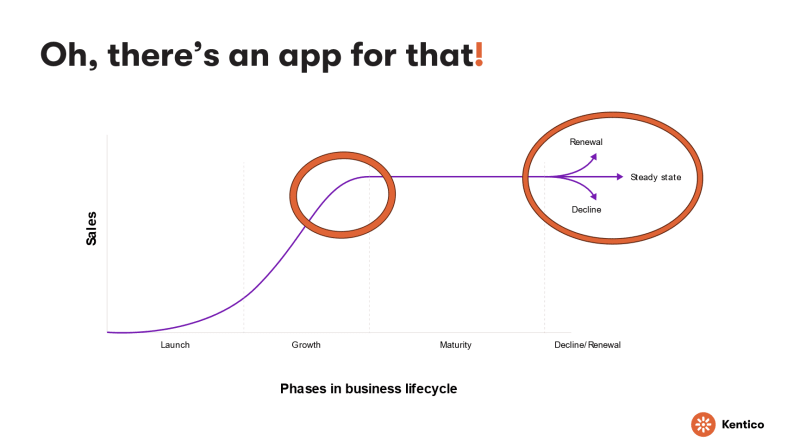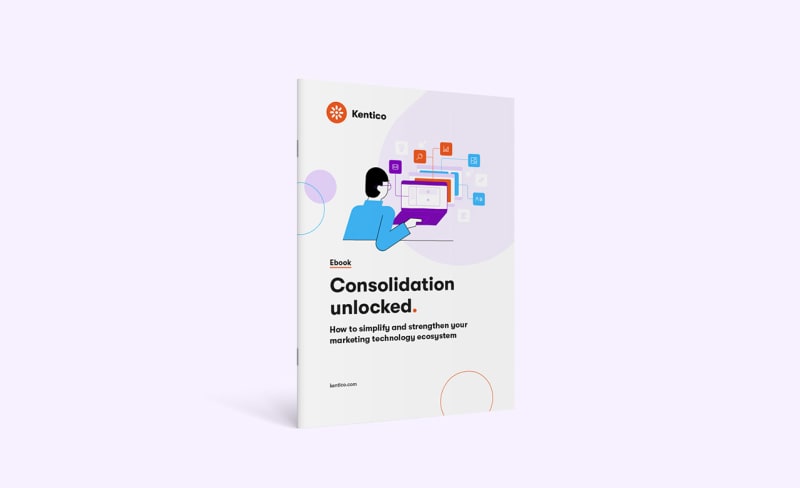The biggest challenge companies have in 2024 is tech stack complexity. It’s not a new problem. In fact, organizations have been complaining about this issue for years—nay, decades! An ever-expanding web of technologies has created a labyrinthine landscape for businesses to navigate. And the associated costs are crippling! So why aren't they consolidating?
A complex and fragmented tech stack can lead to inefficiencies, compatibility issues, security vulnerabilities, and higher maintenance costs. By consolidating, businesses can reduce complexity, improve agility, enhance productivity, and lower overall costs. Sounds like a no-brainer. So, why are so many businesses still struggling with complex solutions that keep them trapped in a world of pain?
To investigate this conundrum further, I recently asked a room full of my content industry peers at the CMS Kickoff in Florida the following questions:
If ‘consolidation’ is a solution that content and marketing teams are seeking, then:
- What is the problem they are trying to solve?
- What are they wanting to consolidate?
- Is it worth solving?
- Why hasn’t it been solved?
Let’s dive in.
If consolidation is the solution....
More insights are needed into what makes people re-evaluate their technology stack, however I have a theory about this. I believe that most companies go through the following stages before they put a concerted investment into solving the issue:
Stage 1: Complexity (What is the problem we’re trying to solve?)
Tech stack complexity has often grown due to what I refer to as ‘Oh there’s an app for that!’ syndrome. This is when companies have an immediate problem to solve and do so in the most expedient and cost-effective way possible.
- “An open-source CMS? Great, that means it’s free!”
- “We have an in-house developer? Super, let them whip up a static site in the latest flavor of JavaScript!”
- “We just need a simple microsite or landing page but don’t want to engage with developers! Hey look, there’s an app for that!”
- “We’re just looking to generate a royalty-free image for our next blog! Who knew? There’s an app for that too!”
Over time, many organizations have grown a complex network of IT systems that are not capable of talking to each other eloquently. This can result in data silos, inefficiencies, security risks, lack of agility and increased costs.

Stage 2: Increased costs (Why do we want to consolidate?)
As companies scale their business, this nest of sleeping vipers grows too. Managing this level of complexity is costing them much more than they thought it would (e.g. in management and maintenance efforts).
These companies eventually reach a point where they experience the pain of having unmanaged content spread among a plethora of applications that were picked to solve an immediate problem but do not integrate well with the rest of the stack, are no longer fit for purpose, or just sit there gathering dust and getting in the way.
Larger companies may have been living with their complex system for so long that they are now facing the possibility of decline—their ability to innovate and adapt is hindered while operational costs and inefficiencies are growing. It starts eroding their bottom line or preventing them from reinventing their brand or product lines. Profitability takes a hit. However, while they’ll likely acknowledge a problem, it’s not yet hurting enough to warrant a concerted effort to fix.
Stage 3: The compelling event (Is it worth solving?)
Finally, they reach a tipping point—a compelling event that emerges from one or several macro-environmental factors (economic, technological, political, legal, and social) to create a scenario that requires action. The way inflation has got everyone’s attention today. This event shows them in no uncertain terms just how urgent it is to address their complexity. Because it is preventing them from doing business or even eroding their revenue, reputation, and results.
Stages one through three give us our answers to what the problem is, why we’re trying to solve it, and whether it’s worth solving (YES!).
But what still eludes us is why it hasn’t already been solved.
The consolidation conundrum.... (Why hasn’t it been solved?)
Providing marketers with greater oversight and control, enabling them to do more with less, and reducing overall costs have been factors driving businesses to market in a bid to consolidate for years now. It has become something of a holy grail.
So, where’s the problem?
This topic was hotly debated among my peers at the CMS Kickoff event. We concluded that while the technological and procedural environment has reached a point where teams can no longer function effectively and efficiently, tech stack complexity persists because what we are trying to solve is not so simple.
Let us peel back a few layers to understand why consolidation is harder than it looks.
1. There are many layers of technical complexity
From the number of applications purchased and the level of duplicate or under-utilized functionality, to the challenge of governing and managing multiple content repositories and marketing channels, there are many layers of technical complexity.
Once the functional and non-functional requirements are defined, the business is tasked with identifying the right set of tools that will meet today's needs and position the company for the future.
There are multiple ways in which the IT aspect of the problem can be solved, too:
- Design and build everything from scratch yourself. It might be easy to convince yourself now that your requirements are unique, but down the line, when you no longer have the developer knowledge in house, your technology begins to age, or the maintenance of a bespoke solution starts to bite into your operational budget, you’ll realize you don’t really want to be a unicorn after all.
- Compose a suite of best-of-breed applications and design them to access the same data source/s. Attractive as industry analysts and some vendors make this option seem—selecting just the highly specialized services that deliver the discrete functionality you need—this approach still carries a high burden when it comes to governing the performance of your marketing ecosystem, not to mention implementation and ongoing management and maintenance costs. Wouldn't it be better to oversee just a handful of vendor contracts instead of hundreds?
- Grow a suite of marketing channels as you need them, that work natively with a centralized content repository and provide marketers with the functionality they need to work within those channels without having to integrate them. (Did somebody say ‘no-brainer?’)
2. The real challenge will be people
While at first glance, consolidation may appear to be a technical problem, the most challenging aspect is not really the technology, but the change it represents for people and processes.
Each application has an owner who is faced with the challenge of meeting their team's needs. Each team has its own set of tools and processes that are chosen to match its goals and way of working. Across an organization, these goals, agendas, processes, and tooling are unlikely to 100% align, and any changes to them is likely to have a budgetary impact—either costing someone more or removing the need for the budget they have been granted.
So even if the corporate decision is to consolidate, the challenge is to achieve genuine buy-in to organization-wide change at worst, and localized process change and training at best.
3. You need a future-proof solution to the problem
For many years, the industry has been led down the path of design-first, instead of content-first thinking and has long prioritized what the content will look like instead of its purpose, value, or relevancy.
Future-proofing our ability to deliver the most relevant digital experiences for our customers could prove challenging if we have taken a ‘technology-first’ approach (“Here is my fabulous new website design running on technology X. Now... what content should I put in it?”).
If the current pace of change is any indication, then what is relevant today is likely to be vastly different in two to three years' time. How frequently are your planned IT refresh cycles? Every three to five years? Can you afford to do an IT refresh more frequently to keep up with the changes? If you want to future-proof content teams and the way they work, then technology considerations are only part of the equation.
Content is your constant
Content is a constant in our digital world, even more so than technology. Which is why it’s crucial to think about it from the start of any project. Instead of diving into design details right away, focusing on your content strategy and structure can help you reach more people across different platforms and technologies.
While we can't control how technology evolves, we can make the most of our content's power. Sadly, not many organizations take the time to understand what their content needs to achieve or how to use it effectively.
Not establishing a solid content plan before starting a website or digital project might limit your ability to adapt down the line. If you plan for content flexibility and growth now, you'll avoid getting stuck in your current (soon-to-be-outdated) ways of doing things.
Consolidation: More than technology
Achieving consolidation requires not only technological solutions but also navigating the complexities of human behavior and organizational dynamics. Moreover, embracing a content-first approach may offer a key to unlocking future-proof solutions, ensuring that content remains at the heart of your marketing strategy amidst the ever-changing landscape of technology.
By prioritizing content strategy and flexibility from the outset, businesses can position themselves to adapt and thrive no matter what the future has in store.
If you're interested in learning about how consolidated content can supercharge content teams, check out this article: Content hub: Manage your multichannel content from one place.

Discover more tips for simplifying and strengthening your martech ecosystems with our free ebook, Consolidation unlocked.

